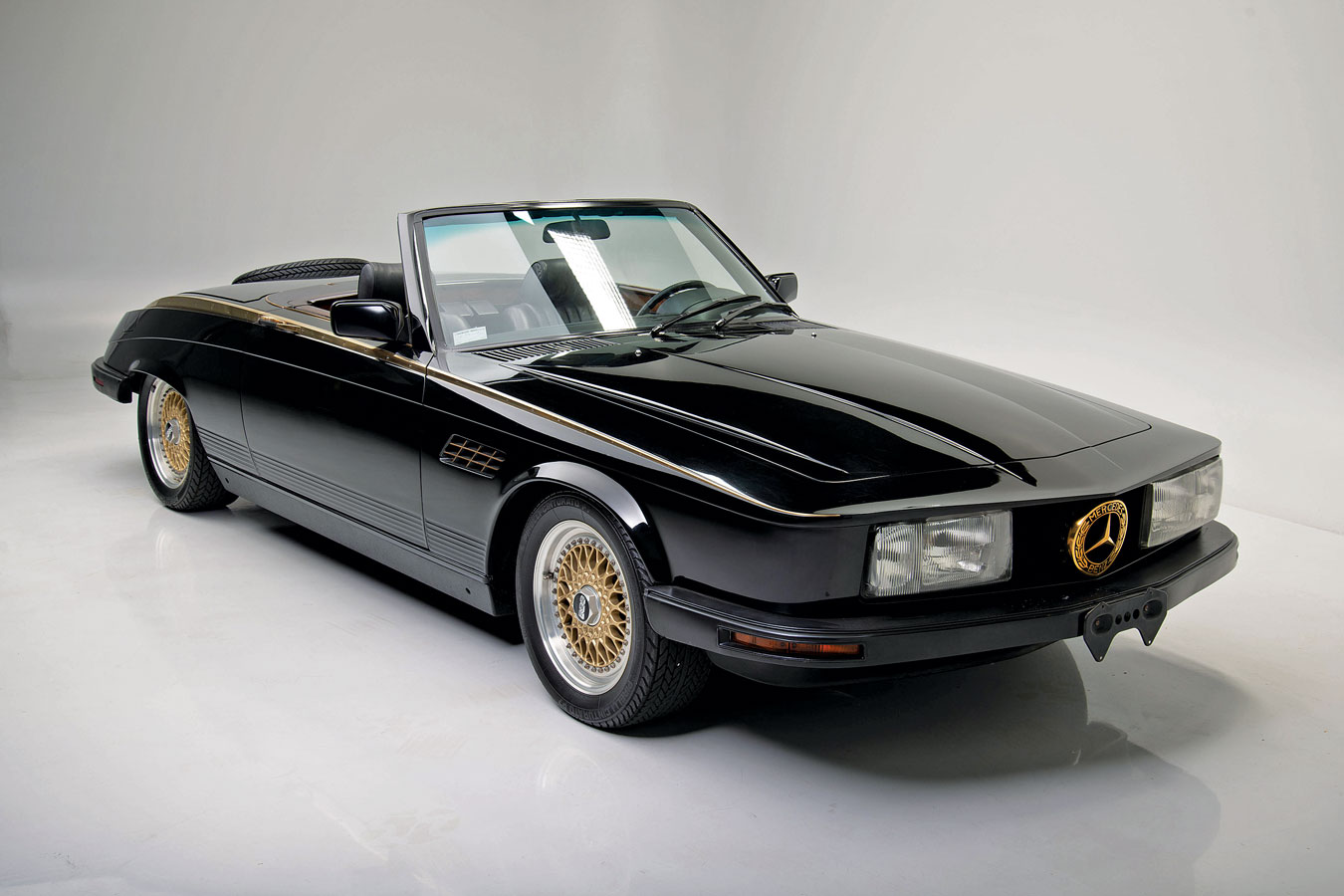Chassis Number: WDBBA25A7BB001557
This radically restyled interpretation of the 1981 Mercedes-Benz 380SL was built to exacting standards by Long Island coachbuilder and artisan Niko Sokol. Long known to clients seeking greater exclusivity and personalization than the factories could provide, Niko-Michael Coachworks enjoyed a reputation for quality work and drew a strong clientele.
Thoroughly reimagined with a sweeping profile suggestive of Classic Era design, yet maintaining its Mercedes-Benz heritage, this 380SL is truly unique. The customary removable hard top was totally reworked and equipped with a very well-engineered manual-retracting system, allowing it to be stowed completely out of sight when not in use.
Headlamps were moved inboard, and cooling vents added to each front fender for improved engine cooling.
Since available trunk space was reallocated to the stowable hard top, the spare wheel and tire were repositioned to the rear decklid, reminiscent of Virgil Exner’s Chrysler designs of the late 1950s and early 1960s.
Custom-fabricated trim adorns the bodysides, plated in real gold, with the same treatment applied to the car’s other brightwork. The interior, requiring no improvement over factory design and appointments, remains stock. A set of 16-inch BBS cross-lace wheels provides the finishing touch.
Power comes from a 3.8-liter fuel-injected V8 engine mated to a 4-speed automatic transmission.
With fewer than 2,000 miles indicated from new, the SL remains essentially as-new, having been on long-term display at Las Vegas legend Wayne Newton’s museum at his Casa de Shenandoah home.

